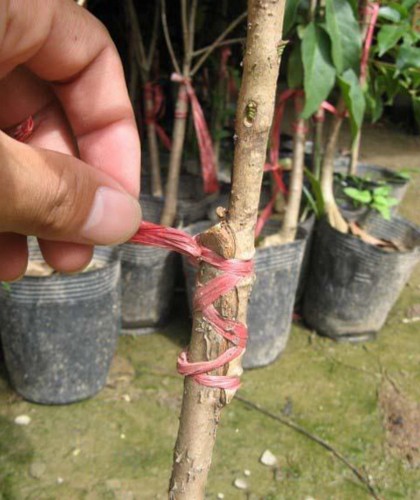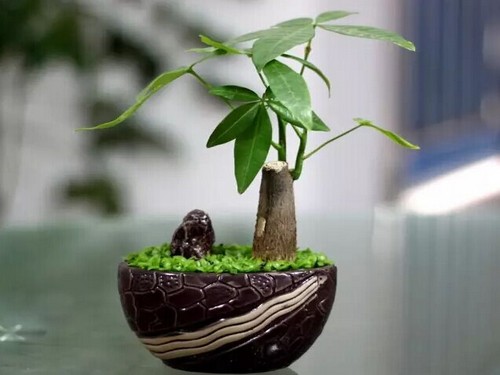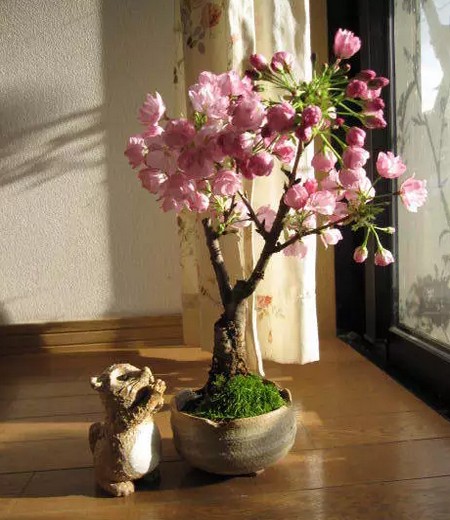Grafting technique of potted Osmanthus fragrans
There are many methods of sweet-scented osmanthus grafting, among which the grafting method is commonly used in potted sweet-scented osmanthus in China. Its advantages are: long time for grafting, easy to survive, fast forming and early flowering. The key points of osmanthus fragrance joining technology are introduced as follows:

1. Cultivate rootstocks. The rootstock species used for grafting sweet-scented osmanthus include privet, tassel tree and so on. The rootstocks for grafting should be robust and free from diseases and insect pests, 2-3-year-old seedlings with a diameter of more than 1 cm or 2-3-year-old branches on perennial trees.
2. Select scion. Osmanthus fragrans have Jin Gui, Yin Gui, Dan Gui, Siji Gui and other varieties. First of all, sweet-scented osmanthus varieties can be selected according to their preferences and resource conditions, and then 2-3-year-old branches with strong growth, full development, no disease and insect harm and moderate size can be selected as scions.
3. Grafting method.
⑴ moved the scion closer to the rootstock. The branches of sweet-scented osmanthus selected as scions can be close to the branches of rootstocks by means of support, cushion, frame, hanging, binding and so on. Then determine the suitable grafting position of rootstock and scion, and fix the position.
⑵ cutting interface bevel. The interface bevel was cut at the grafting site between the rootstock and the scion. The slope is oval in shape, with a length of 3-5 cm, and the depth of the slope is generally no more than half of the thickness of the branch.
⑶ cutting anvil. After the grafting and binding is completed, cut off the branches of the rootstock 1 cm above the interface.
⑷ to remove cuteness. After grafting, if the branches germinate below the interface of the rootstock, it should be erased in time. 31-35 days after grafting, the scion was cut off from the interface and separated from the mother.
The survival rate was checked by ⑸. 3-5 days after cutting the scion, the scion branches and leaves grow normally and survive; if the leaves wilt and curl, that is, they do not survive, they should be re-grafted. After the grafting survived, the branches grow fast, and the binding rope is easy to be embedded in the bark to affect the growth, so the binding rope should be loosened in time.
How to graft sweet-scented osmanthus? Sweet-scented osmanthus grafting culture generally uses privet or water wax as rootstock. Ligustrum lucidum and water wax have strong adaptability, cold and waterlogging resistance, easy to breed, but the interface is easy to break after survival. In order to overcome this disadvantage, the method of low grafting can be adopted, that is, the grafting site is buried in the soil during planting, so that the scion itself can grow roots. The grafting time is from March to April. The grafting methods are generally abdominal grafting and resting grafting.
① ventral junction:
Ventral grafting means that the rootstock is trimmed before grafting. Cut off all the pieces at 6ml / 7cm from the soil surface, and cut obliquely near the rhizome. Don't hurt the medulla. The scion uses 2 Mel 3 to produce branches (without leaves), about 10 cm long. It is suitable for those with 2 Mel 3 sections. Then the ear interface is cut into an unequal wedge and inserted into the cutting of the rootstock to make it close. Bind the soil with plastic or hemp skin to the top of the scion.
② docking:
To pick up is to first put the rootstock in a basin to feed. During the Meiyu period from June to July, two-year-old sweet-scented osmanthus branches with similar thickness to rootstocks were grafted in pots, and cut off in front of "White Dew" after survival. That is, the new plant can blossom in the same year. After the grafting survived, when the new grafted wood was slightly as long as 10-15 cm. Cut off all the remaining branches and tillers of the rootstock. As the anvil is easy to sprout adventitious buds, it should be peeled off at any time. Drought resistance, topdressing and weeding were carried out from June to August. Potted seedlings. When the new shoot reaches about 15%, coring should be carried out to promote the growth of lateral branches and form a shrub.
Time: 2019-05-25 Click:
- Prev

Planting method of potted rich tree
Rich tree has become a more and more indoor green plant choice. The suitable growth temperature of potted rich tree is 20-30 degrees, and the indoor temperature should be kept above 10 degrees in winter. It is suitable for growing in loose, fertile and well-drained slightly acidic sandy loam. The common cultivated varieties are rich tree with leaves and big flowers.
- Next

Cultivation techniques of Cherry Blossom Bonsai
The cherry blossom is a symbol of the Japanese nation, which has an irreplaceable position in the eyes of the Japanese, representing their spirit and aesthetics, at all costs for the brilliance of the moment. The Japanese call cherry appreciation a flower meeting, which has been called a folk custom. Cherry blossoms can be potted. Cherry blossoms are suitable to be planted in most areas of China.
Related
- Fuxing push coffee new agricultural production and marketing class: lack of small-scale processing plants
- Jujube rice field leisure farm deep ploughing Yilan for five years to create a space for organic food and play
- Nongyu Farm-A trial of organic papaya for brave women with advanced technology
- Four points for attention in the prevention and control of diseases and insect pests of edible fungi
- How to add nutrient solution to Edible Fungi
- Is there any good way to control edible fungus mites?
- Open Inoculation Technology of Edible Fungi
- Is there any clever way to use fertilizer for edible fungus in winter?
- What agents are used to kill the pathogens of edible fungi in the mushroom shed?
- Rapid drying of Edible Fungi

